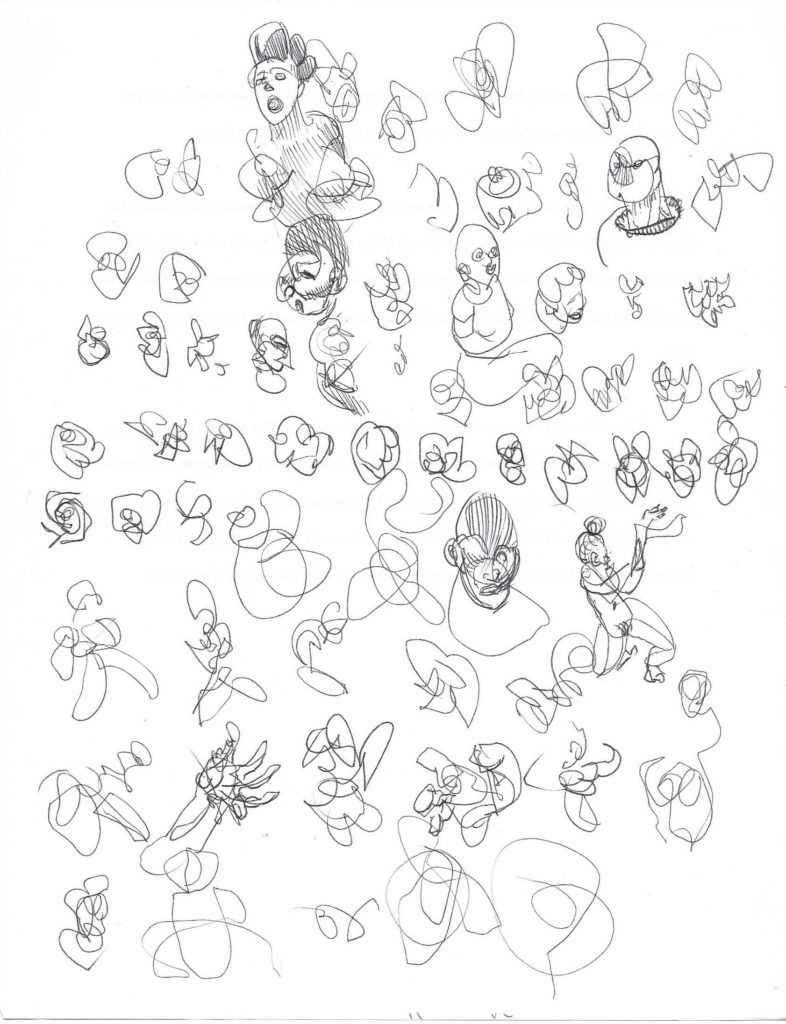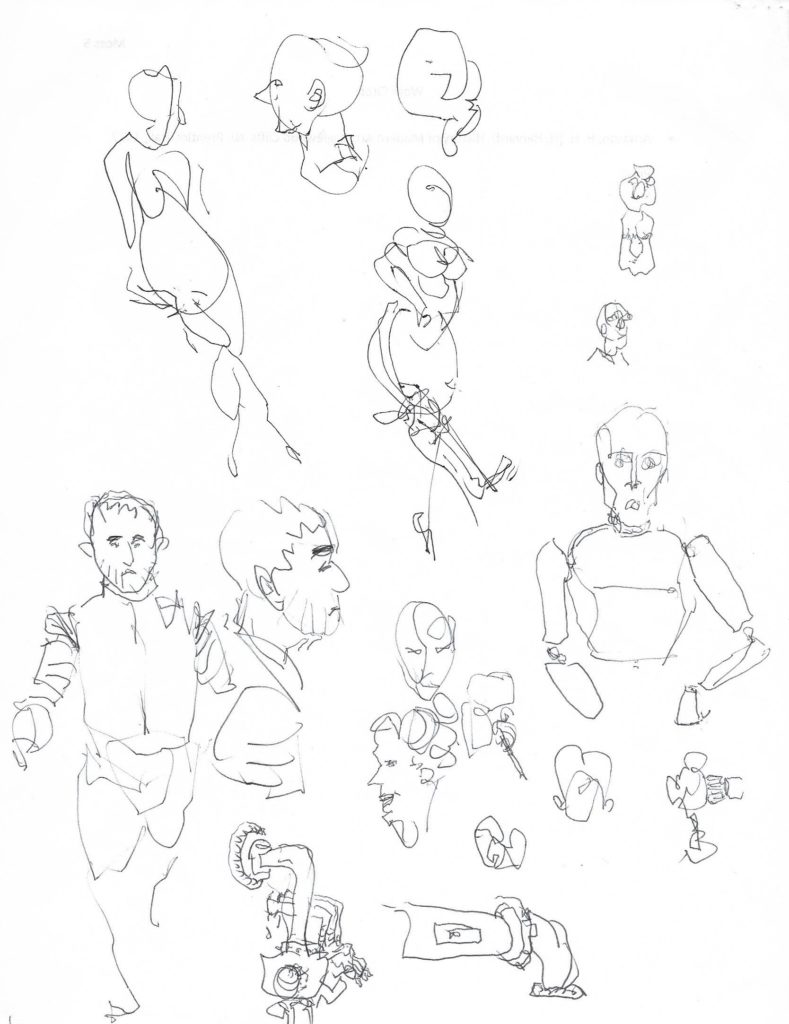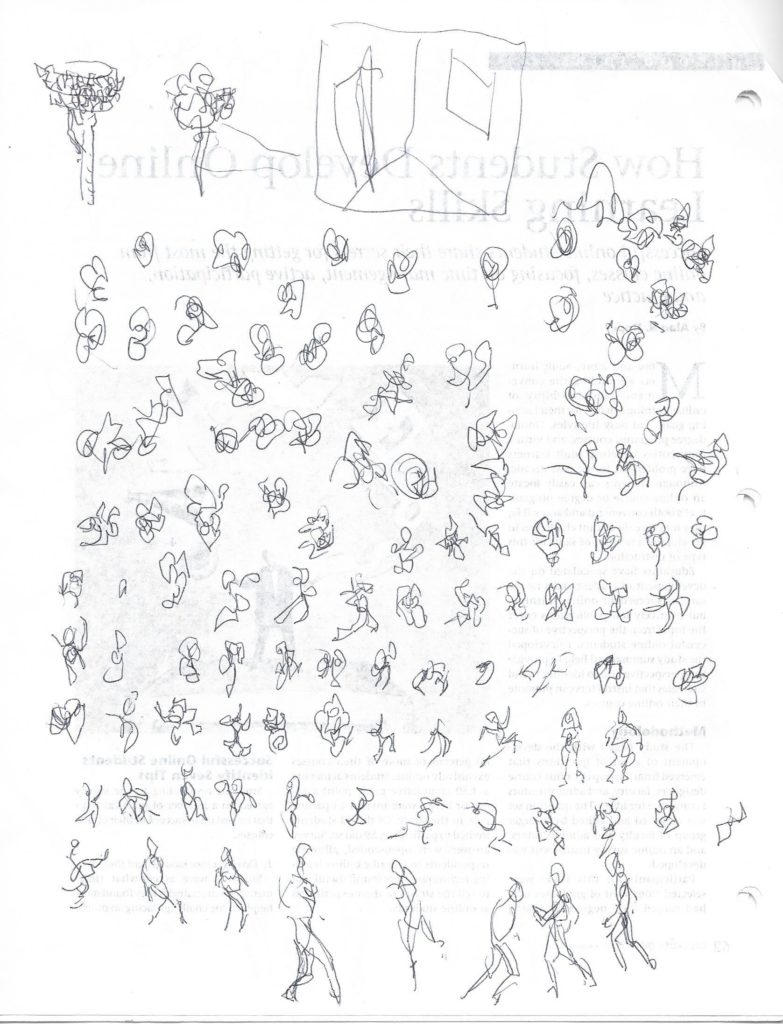The Rules of Doodling 3
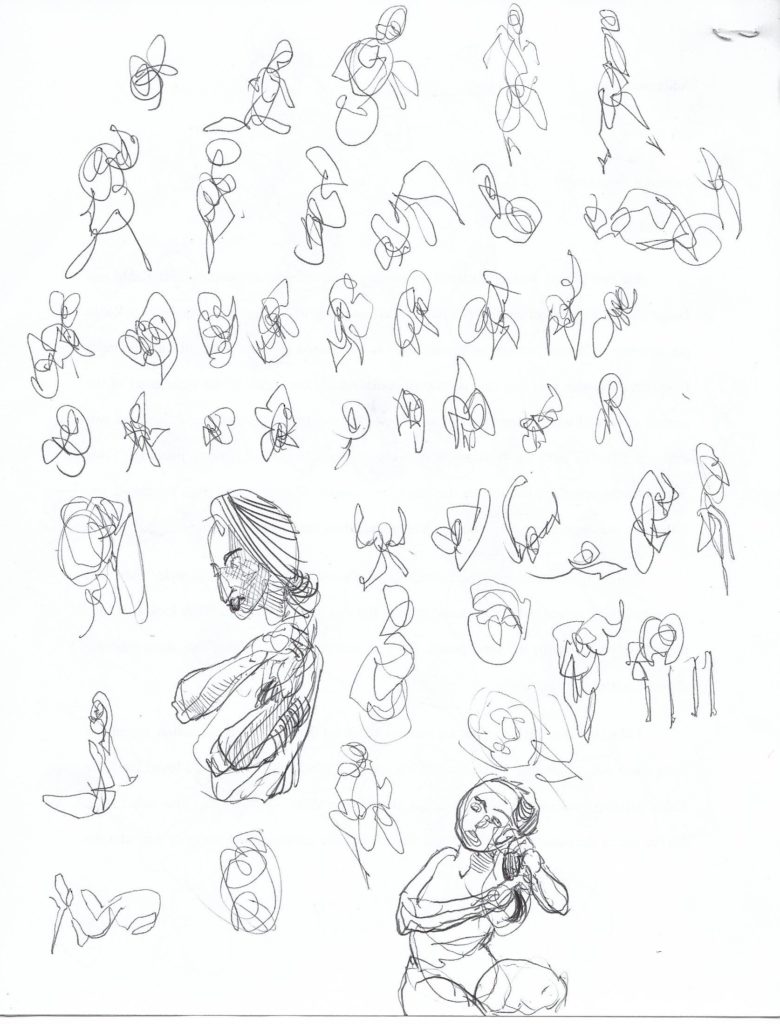 In as much as I was counting the loops I made in my doodles in the interest of finding a formal system for the practice of doodling, I soon abandoned the whole idea. I really enjoyed the structure it was promising, but it was getting tedious, counting the loops and then second-guessing if I had done it properly according to my own rules. And it was forcing my doodles into a corner, which I should have seen coming since the very act of doodling disregards the idea of rules! And yet, I did learn a couple of things about how to incorporate limitations in your work, which is always a worthy endeavor; artists need to embrace restraints in a work of art. At some point later in my artistic explorations, I can see myself counting loops again as a way to locate some lost wisdom or something.
In as much as I was counting the loops I made in my doodles in the interest of finding a formal system for the practice of doodling, I soon abandoned the whole idea. I really enjoyed the structure it was promising, but it was getting tedious, counting the loops and then second-guessing if I had done it properly according to my own rules. And it was forcing my doodles into a corner, which I should have seen coming since the very act of doodling disregards the idea of rules! And yet, I did learn a couple of things about how to incorporate limitations in your work, which is always a worthy endeavor; artists need to embrace restraints in a work of art. At some point later in my artistic explorations, I can see myself counting loops again as a way to locate some lost wisdom or something.
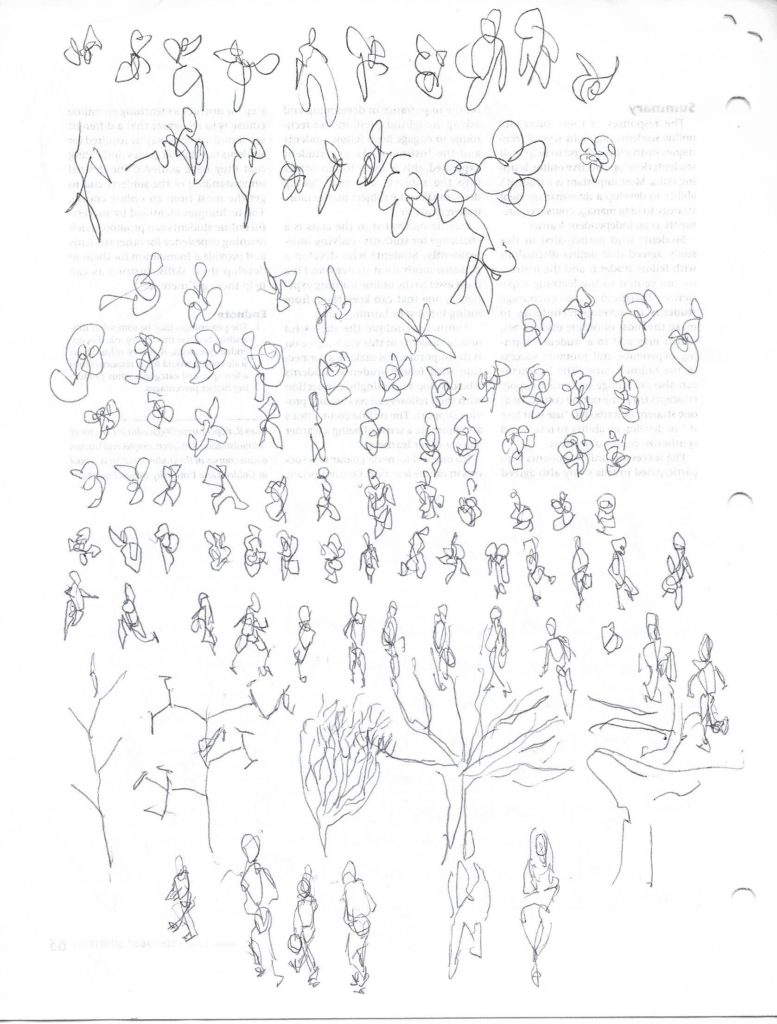 When looking at the past couple of years, I have gone through various periods in my doodles. There was one stage where I was focused on the many ways people walked. I was concentrating my viewpoint on people walking toward me, so I was drawing people from the front. It is much easier to show a figure walking from the side, so I was attempting to uncover the secrets of frontal strides because I wasn’t sure if I could do it.
When looking at the past couple of years, I have gone through various periods in my doodles. There was one stage where I was focused on the many ways people walked. I was concentrating my viewpoint on people walking toward me, so I was drawing people from the front. It is much easier to show a figure walking from the side, so I was attempting to uncover the secrets of frontal strides because I wasn’t sure if I could do it.
Instead of drawing from a photo or other captured image, I was observing people in public. But I was not drawing from observation, not in the strict definition; actually, it was more like I would look and digest what I had just seen, and then I would draw from memory, the moment it was already gone. Of course, when watching someone’s steps, you have no chance at an observational rendering because you find it happens so quickly that you have to try to see the next step to understand what you have just seen the second before. It was a quick process: I would look, grasp the figure in my mind, and bend my head to my sheet to find the walking figure in a few loops.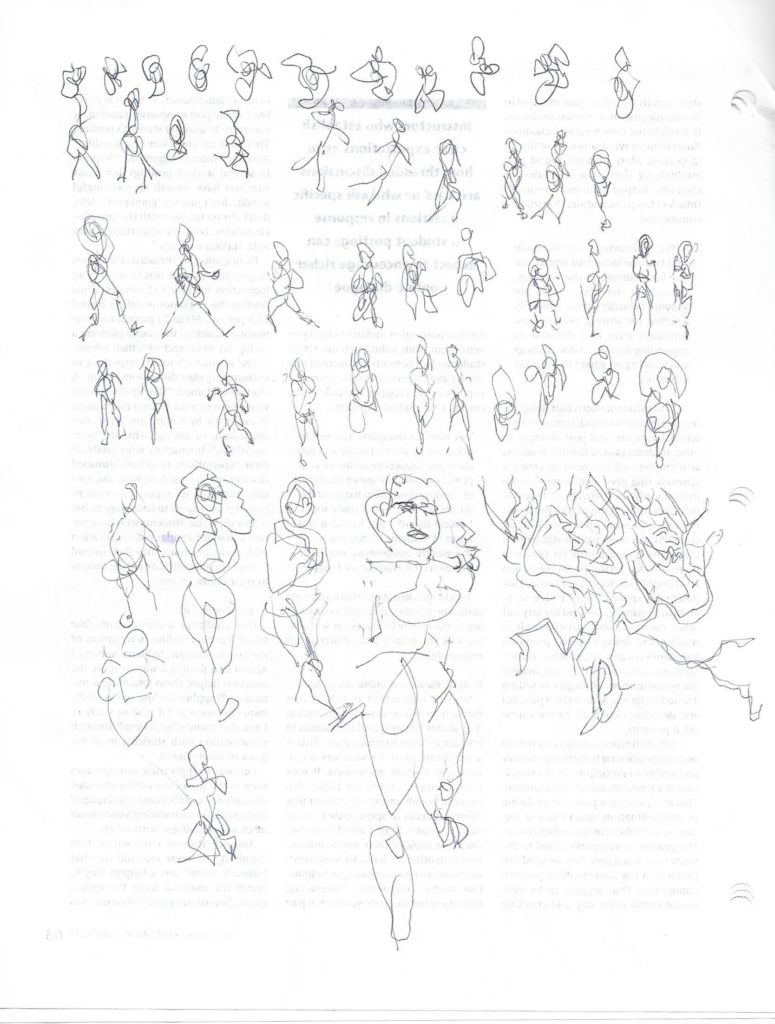 Everybody has a different walk. If words could represent an amble or a march or a fleet-footed shuffle, a few scrawls had the capacity to get at something almost unmentionable but far more sophisticated in expression. There was a personality behind everybody’s walk, it seemed, and I was witnessing the gestural analog of a moving fingerprint.
Everybody has a different walk. If words could represent an amble or a march or a fleet-footed shuffle, a few scrawls had the capacity to get at something almost unmentionable but far more sophisticated in expression. There was a personality behind everybody’s walk, it seemed, and I was witnessing the gestural analog of a moving fingerprint.
With each worthless scribble, I was getting at something deeper and more fundamental than just cataloguing an endless stream of idiosyncratic steps, and I knew that when you succeed in something like this, you possess a part of that thing you’re representing (even if with nothing but flimsy lines). I was expanding my collection of such information. This was information I can use. Such a thing can come out again whenever I needed it in some future project. I have been collecting such data for years, growing my personal library to its greatest dimensions yet, hoping to be able to use all this understanding whenever it was needed in a painting or some such ambition.
